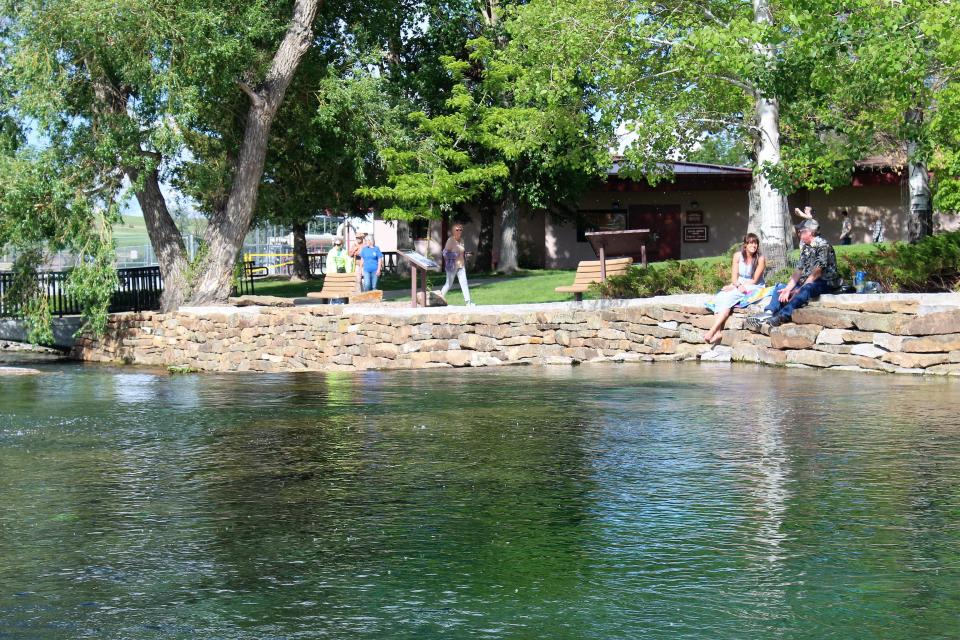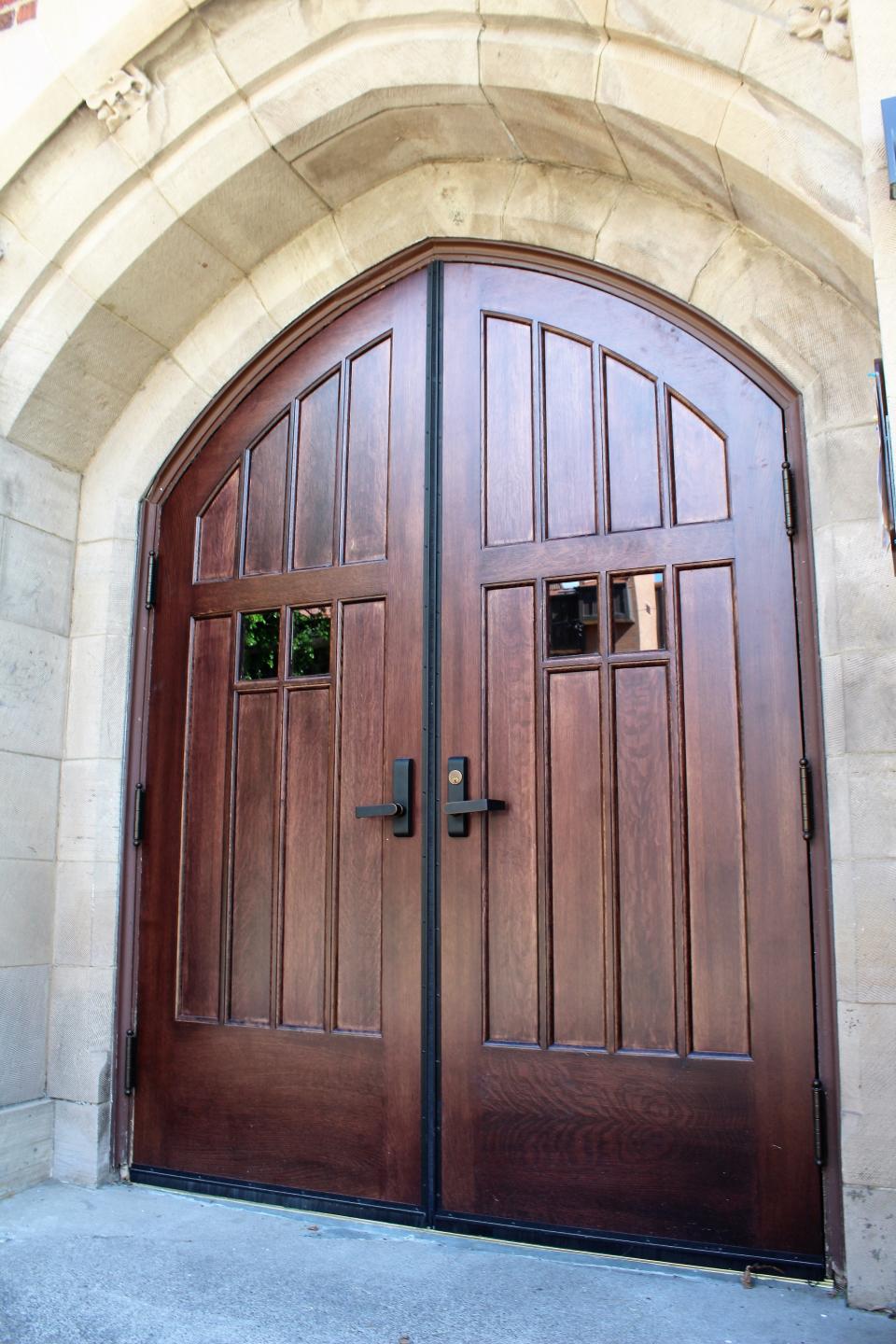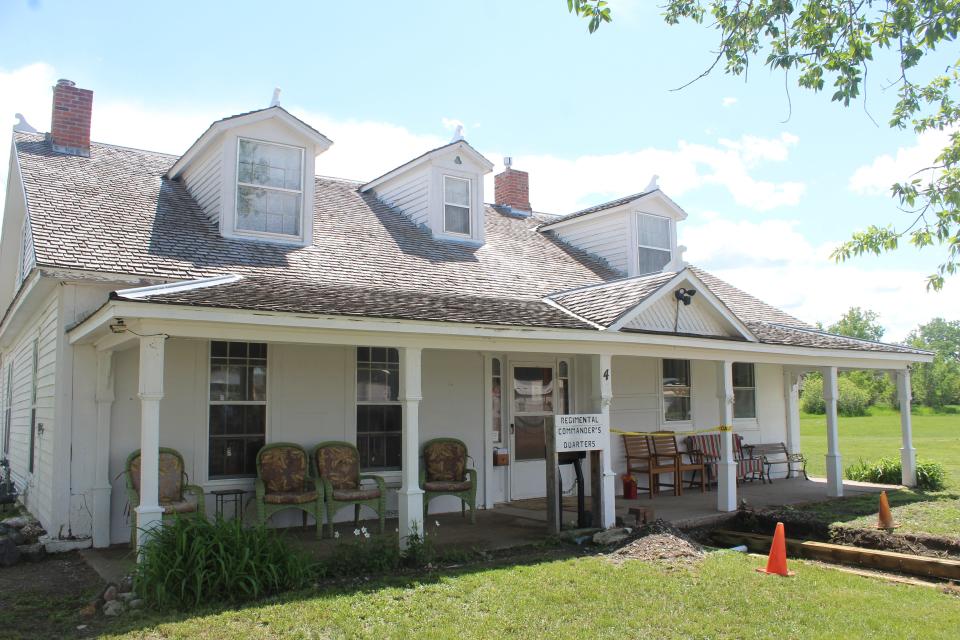Walls, barn, doors and fort recognized for preservation achievement
Each spring the Cascade County Historic Preservation Advisory Committee selects recipients of its preservation awards. The nominees selected represent some of the most important projects, institutions and people across Cascade County who are working to ensure the history and cultural richness of central Montana is preserved for future generations.
The following are the recipients of the 2023 Cascade County Historic Preservation Awards.
Giant Springs State Park and Dustin Iverson

While nearly every visitor to Giant Springs State Park stops to enjoy the springs, fewer take time to examine the rustic beauty of the rock retaining wall that encircles their southern edge.
The retaining wall was first built by local stonemasons in 1915 as part of a project by the Montana Power Company to make the springs more visitor friendly. The wall was rebuilt several times over the next 80 years, but by the 2000s it was clear that a major reconstruction was needed.
In 2022 local stonemason Dustin Iverson was hired to rebuild the retaining wall using the same materials and techniques used 107 years earlier. The reconstruction was completed without the use of power tools and mortar, except of a top cap on the dry-stone retaining wall. Completing the project required Iverson to spend long hours standing in the knee-deep waters of Giant Springs.
The retaining wall reconstruction project was completed with funding from Montana Fish, Wildlife and Parks, the Missouri/Madison Fund and Northwestern Energy.
The J.C. Adams Stone Barn and Bob Milford

Kentucky-born James C. Adams was orphaned at 10 and a civil war prisoner at 16. He came to Montana territory in 1864 at the age of 18, already a seasoned teamster. Ten years later he bought a property along the Sun River, with the plan of supplying beef to the soldiers at Fort Shaw. His business prospered.
In 1882 Adams hired Swedish stonecutters to build a monumental barn from native sandstone. Completed in 1885, the barn cost $10,000, an astounding amount at the time.
“The J.C. Adams Stone Barn company rose under the leadership of Bob Milford,” said award presenter Ken Sievert. “Bob has spent countless hours and a good many of his own dollars making all of this happen.”
The Scripps/Howard Fund and Montana Historical Society awarded a $10,000 grant in 2010 to have the barn repainted and maintained by a Fairfield contractor.
“Under the leadership of Bob Milford, the J.C. Adams Stone Barn is looking better today than it ever has before,” Sievert said. “It’s a fitting tribute to this unique and historic barn. I think the builder James C. Adams would be mighty proud of how his 1885 barn looks today.”
“It is a treasure for the Sun River Valley and for Cascade County,” Milford said in accepting the award. “Thanks to all the supporting members who not only gave of their time, but also support the barn financially. The stone barn has stood for 138 and we all hope it will last for another 138.”
First United Methodist Church and Bryan Robinson

The Methodist Church’s imprint on Great Falls history goes back to 1889 when a brick building was erected on the corner of 6th Street N. and 2nd. Ave. North. A fire destroyed that structure in November of 1922, leading to the construction of the current First United Methodist Church.
That structure included a beautiful wood entrance, one threatened with collapse until church and community activists stepped up to restore the doors to their original condition.
“The original entry doors were deteriorating pretty badly,” said award recipient Bryan Robinson of the First United Methodist Church project. “They required new hardware and they had experienced some damage during their 80-plus years of service. They were original to the 1922 brick masonry structure, which is a beautiful example of gothic revival architecture.”
“We started out with the idea that we would take them down and try to rebuild them, but they were beyond the ability to do that. The replacement project closely followed Department of Interior Standards for treatment of historic buildings.”
Robinson credited the church trustees, pastor and building committee members of the First United Methodist Church with the vison to commit to a complete restoration of the church doors.
“They went the extra mile,” he said. “They could have done a cheaper version. They could have replaced doors there that did not reflect the architecture. They care about their structures; they care about their image in the community”
Sun River Valley Historical Society and Burnette Batista

Burnette Batista has been a key figure in preserving the history of the Sun River Valley, specifically the history of the old Fort Shaw military post west of Great Falls.
Fort Shaw was built in 1867 to protect travelers on the Mullen Road, which connected navigation between the Missouri and Columbia Rivers, and to guard the increasing tide of settlers coming to the Sun River Valley from raids by the Peigan Indians.
It was abandoned by the military in 1891, but partially transferred to the Fort Peck Indian boarding school in 1903, which housed and educated hundreds of Native American students from across the Pacific Northwest until closing in 1910.
Nearly all the buildings at the Fort Shaw complex remained intact into the 1940s; however, time and neglect had destroyed much of the old military post by the early 2000s. Elected President of Sun River Valley Historical Society in 2005 and has been central to the preservation of the two remaining officers’ quarters, five original adobe and stone buildings, and that military cemetery that remains.
“Burnette is an endless wealth of knowledge of names, and in the words of fellow volunteers ‘is a major lifeline for keeping the Sun River Valley Historical Society active,’’ her nomination for the Cascade County Historic Preservation award reads.
This article originally appeared on Great Falls Tribune: Historic Preservation Awards recognize significant projects of 2022

